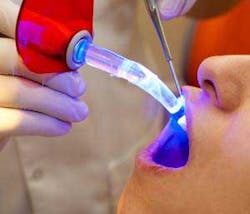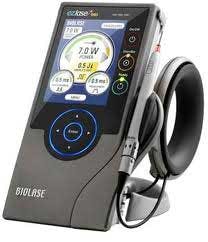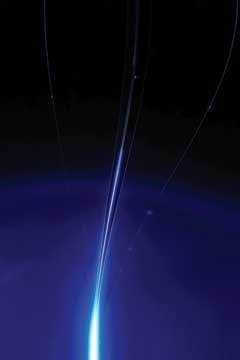The conclusion of the review is that there is a need to develop an evidence-based approach to the use of lasers for the treatment of chronic periodontitis. Currently, there is insufficient evidence to suggest that any specific wavelength of laser is superior to the traditional modalities of therapy. Current evidence does suggest that use of the Nd:YAGor Er:YAGwavelengths for treatment of chronic periodontitis may be equivalent to scaling and root planing (SRP) with respect to reduction in probing depth and subgingival bacterial populations.
However, if gain in clinical attachment level is considered the gold standard for non-surgical periodontal therapy, then the evidence supporting laser-mediated periodontal treatment over traditional therapy is minimal at best. Lastly, there is limited evidence suggesting that lasers used in an adjunctive capacity to SRP may provide some additional benefit.
While this review was performed in 2006, this author attended a recent course by Dr. Cobb, where he reiterated the conclusions from 2006.(2) His course began with the question: Does laser mediated non-surgical periodontal therapy provide a better, similar or inferior result when compared to traditional SRP? His presentation addressed the paradox of clinical perception and the evidence for use of lasers in periodontal therapy.
In 2011, the AAP released the American Academy of Periodontology Statement on the Efficacy of Lasers in the Non-Surgical Treatment of Inflammatory Periodontal Disease.(3) According to the Statement, clinical application of lasers for the treatment of periodontal disease has continued to expand since their introduction for this purpose in the early 1990s, but remains controversial. The primary purpose of the statement is to provide an evidence-based perspective on three of the purported benefits of using lasers in the nonsurgical treatment of periodontal disease, i.e., sulcular and/or pocket debridement (a.k.a. laser curettage), reduction of subgingival bacterial loads (a.k.a. pocket sterilization), and scaling and root planing (SRP).
It is the position of a number of State Dental Examining Boards that utilization of a laser device by a dental hygienist is permitted when used within the scope of practice of dental hygiene, and in adherence with state statutes. Laser use within the scope of dental hygiene practice is as an adjunct device to scaling and root planning is most often cited, and training/education is necessary and should include a hands-on proficiency course provided by a recognized sponsor of continuing education, in accordance with the current rules for continuing education for the state. Licensees utilizing laser technology should maintain documentation of the satisfactory completion of the formal continuing education or training, from programs that qualify for CE credits.
For the most up-to-date information on States That Allow Hygienists to Use Lasers, and the authorizing rule, law, or policy that permits such use, click here to see the ADHA compilation of this information.(4)
Additional Reading 1. Chiarelli K. Lasers for Periodontal Disease and Evidence-Based Decisions. ADHA Strive, April 2012. http://www.adha.org/publications/strive/04-2012-strive.htm. 2. Dowst-Mayo L. Dental Lasers and the Dental Hygienist. RDH Magazine. http://www.rdhmag.com/articles/print/volume-28/issue-6/feature/dental-lasers-and-the-dental-hygienist.html. 3. Advanced Laser Training. http://www.advancedlasertraining.com/.
Maria Perno Goldie, RDH, MS
To read previous RDH eVillage FOCUS articles by Maria Perno Goldie, go to articles.









